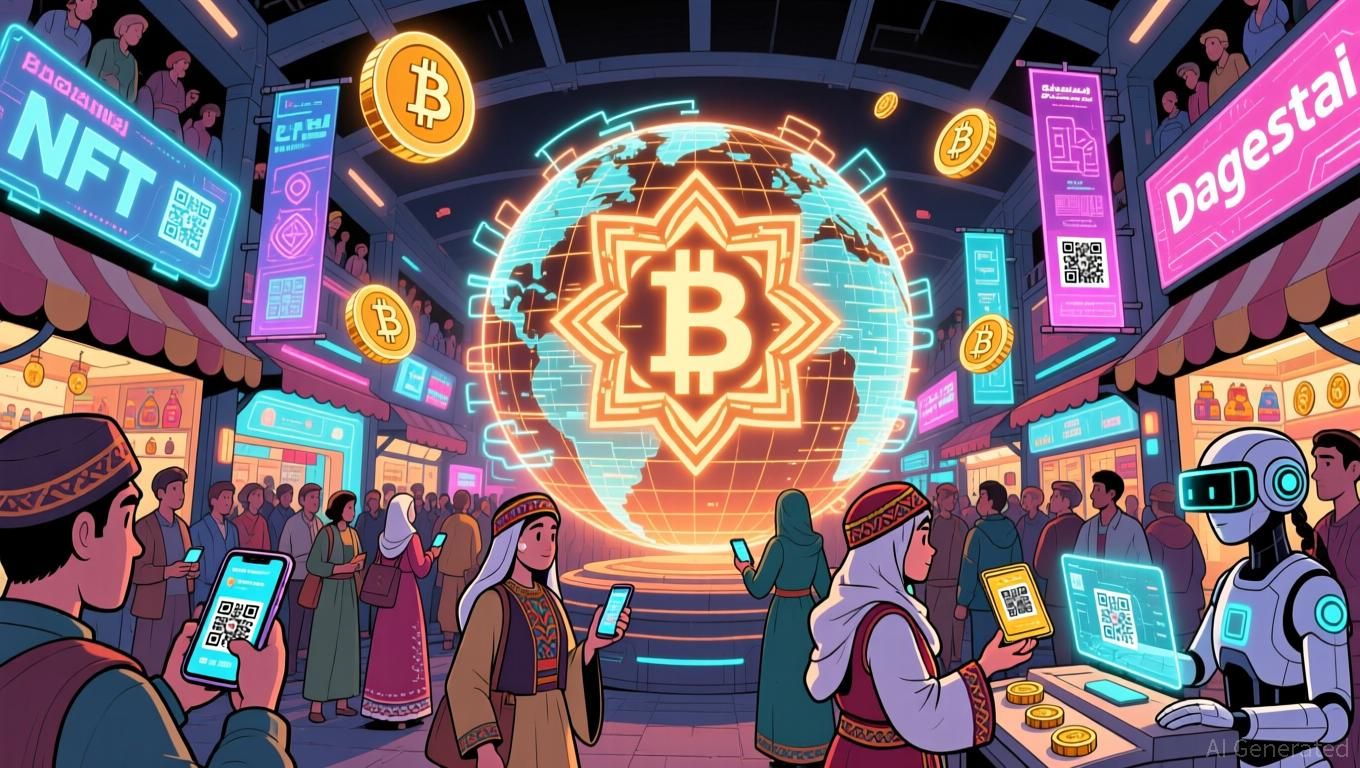Khabib's NFTs Ignite Discussion: Honoring Culture or Taking Advantage?
- Khabib Nurmagomedov's $4.4M NFT collection, rooted in Dagestani heritage, sparked controversy over cultural symbolism and legacy claims. - The project sold 29,000 tokens rapidly but faced scrutiny for post-launch transparency gaps and parallels to failed celebrity NFT ventures. - NFT market recovery (2025 cap: $3.3B) highlights risks like "rug pulls" and volatility, despite celebrity-driven momentum. - Concurrent trends include crowdfunding innovations and sustainability-focused markets like OCC recyclin
The Evolving Landscape of NFTs and Digital Collectibles
Digital collectibles and non-fungible tokens (NFTs) have reignited enthusiasm for blockchain as a tool for building fan communities and brand loyalty. High-profile launches have attracted both praise and criticism, especially as celebrities and cultural icons enter the space. A notable example is Khabib Nurmagomedov’s NFT collection, which drew on his Dagestani heritage and generated $4.4 million in sales by moving 29,000 tokens within just over a day. The project, however, became the subject of controversy when UFC rival Conor McGregor accused Khabib of misusing cultural motifs and the legacy of his late father, Abdulmanap Nurmagomedov. Khabib responded by describing the collection as a heartfelt homage to his father and Dagestani traditions.
This debate highlights the complex nature of NFTs, where rapid sales and questions about transparency after launch can inspire both excitement and doubt among participants.

Trends and Cautions in the NFT Market
Looking at the bigger picture, the NFT sector has shown signs of recovery. By the end of 2025, the global NFT market cap reached $3.3 billion, buoyed by Bitcoin’s surge past $90,000. This resurgence has attracted celebrities and major brands, but critics warn of fleeting hype cycles and the risk of “rug pulls,” where projects are abandoned after raising funds. Khabib’s NFT launch, while financially successful, echoes concerns raised by blockchain analysts like ZachXBT, who pointed out similarities to McGregor’s own NFT project in 2022, which quickly lost momentum after its debut. These patterns underscore the importance of careful research and skepticism in a market still wrestling with volatility and trust issues.
Digital Marketing and Crowdfunding Innovations
Beyond NFTs, digital marketing and crowdfunding are transforming how businesses connect with their audiences. Green Rain Energy Holdings (OTCID: GREH) recently teamed up with Digital Niche Agency (DNA) to roll out a Regulation Crowdfunding campaign for its subsidiary, Green Rain Development. This partnership focuses on strategic digital outreach, influencer collaborations, and targeted advertising to reach non-accredited investors. Regulation Crowdfunding enables private firms to raise up to $5 million each year, making investment opportunities more accessible while also presenting challenges such as market saturation and the need for investor education.
Shifting Toward Decentralized and Sustainable Solutions
The convergence of digital collectibles, crowdfunding, and sustainability signals a broader movement toward decentralized, community-focused value creation. For example, the Old Corrugated Container (OCC) market—a vital part of recycling infrastructure—is expanding thanks to government regulations and advances in automation. Policies promoting recycled materials and circular economy models are driving up demand for OCC, while improvements in sorting and pulping technology are enhancing efficiency and fiber quality.
Similarly, the market for automatic labeling machines is growing as industries pursue greater accuracy, regulatory compliance, and eco-friendly packaging solutions.
Consumer Values and Market Transparency
As industries adapt, maintaining transparency and aligning with consumer priorities are more important than ever. The retort packaging market, especially in the Asia-Pacific region where demand for ready-to-eat foods is high, highlights the importance of convenience and sustainability in today’s supply chains. Meanwhile, companies like Dragonfly Energy are launching industrial-grade power stations that combine innovation with reliability, addressing energy needs in remote or demanding settings. These trends reflect a global commitment to resilient and environmentally responsible solutions.
Disclaimer: The content of this article solely reflects the author's opinion and does not represent the platform in any capacity. This article is not intended to serve as a reference for making investment decisions.
You may also like
Crypto Sentiment Flips Bullish as XWIN Trend Index Climbs to 72
EURC Growth Accelerates, Euro Stablecoins Capture Market Spotlight

Circle issues 500 million USDC on Solana